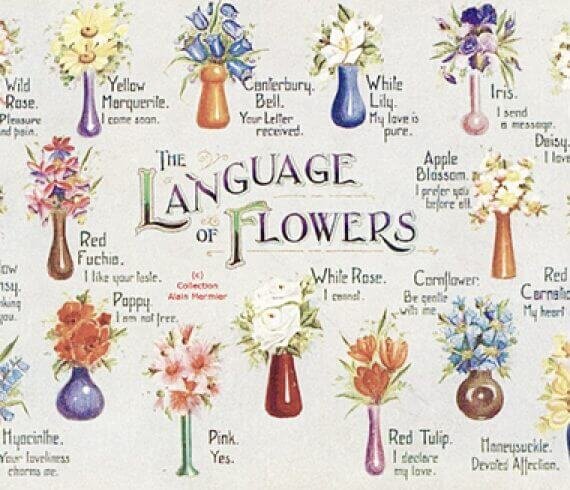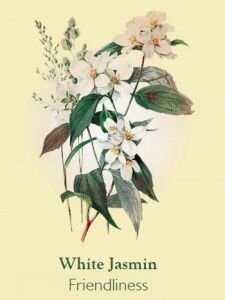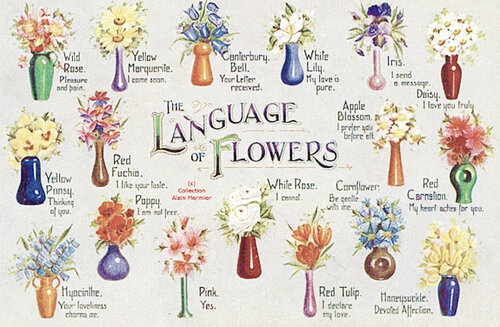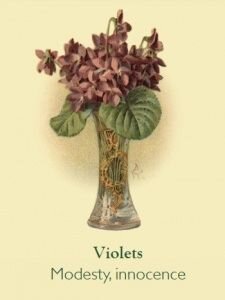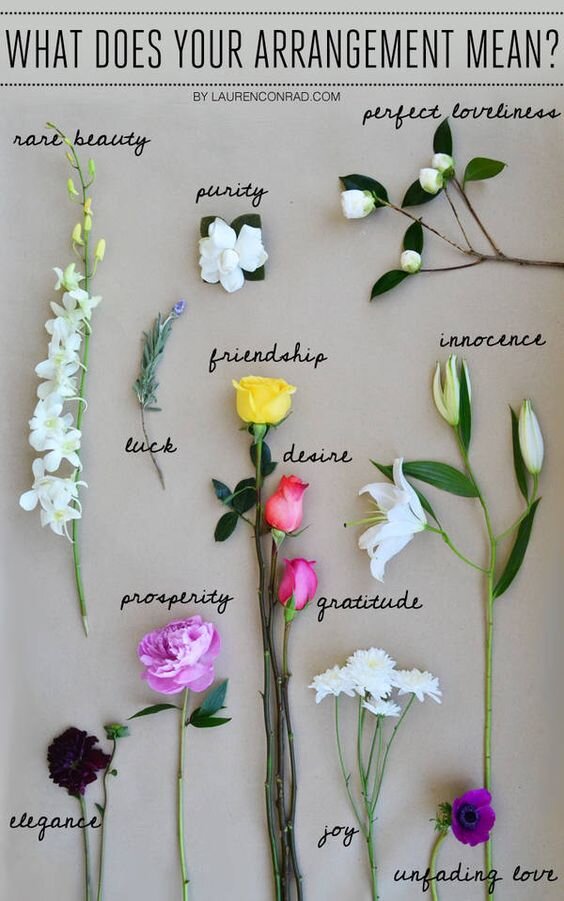Floriography: The Secret Language of Flowers in the Victorian Era
language-of-flowers-1
If you received a bouquet of flowers from a colleague, friend or co-worker your first move may be to thank them and find a pretty vase to display them in. However, if you were living in the 19th century you may have just received a hidden message.
image (1)
History is riddled with stories of women in society (Click here to see the flowers of Downton Abbey) utilizing flowers to pass messages to lovers, friends and enemies. It’s been documented that harem women utilized “Floriography” in order to communicate without their guards knowledge. By 1810 French publishers began putting out flower dictionaries that detailed many different floral codes collected over the years.
77af2a2db777a37e5ea7b5fa6ea0d3c7
So where do these meanings come from?
17320772
Some of the hidden meanings come directly from the root name which was sometimes based from mythology, i.e. “narcissus” would correspond to egotism. Other meanings came from the flowers directly. The colors, medical properties and even “magical” superstition surrounding these flowers helped create this hidden “language”. Below are some of the more obvious connections from the Victorian Era.
Cabbage – looks like cash, meaning wealth, profit or money
Walnuts – symbolized intellect as they look like a brain
Pennyroyal, rue and Tansy – often used in teas as abortifacients. The flowers in a bouquet often symbolized “you must leave”, disdain or “war”
a4766b4fb24175f281393adfcf3a1bc4
However, not all the meanings were as easy to derive. Some of the following make a less sense:
Hydrangea – heartless
Delphinium – Haughty
Azelea – Take Care of Yourself
Buttercup - Childishness
Basil – I hate you
Dill - lust
Stripped Carnation – no, refusal
Oleander – Beware
Birdsfoot Trefoil – my revenge (Thee flower to give passive aggressively)
Green Carnations - homosexuality
"Haughtiness" was symbolized by the Sunflower due to its exaggerated size.
image (2)
Authors also used floral decoding in literary novels like Jane Eyre. In chapter nine, Bronte references that Jane looks at “snowdrops, crocuses, purple auriculas and gold eyed pansies”, which corresponds to her feeling “hopeful, cheerful, modest and preoccupied.
395054becada3d42fb122b47d983b65d
ec9f98fce3a35c8e77aa495a8ea60f5b
3a96c7309190891edfe6ff2a05bcb9ca
image (3)
image (4)
To learn more about Floriography and the Language of Flowers visit:

